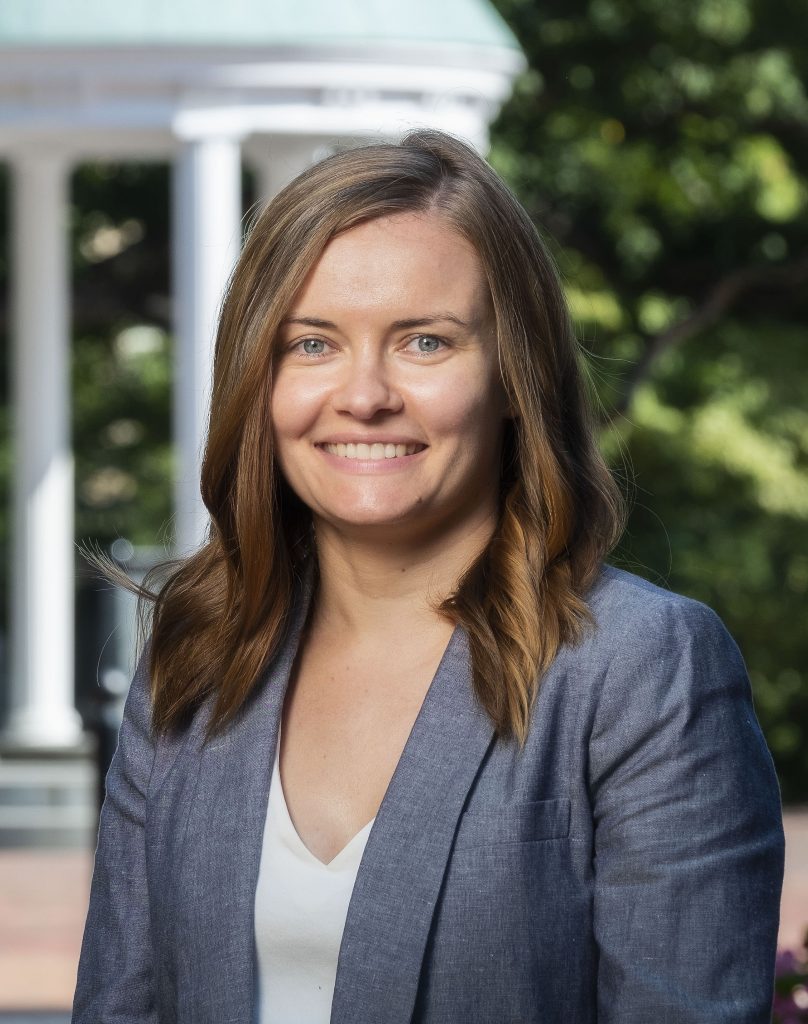On March 16, 2020, Kate Hash became ITS’ Assistant Vice Chancellor for Customer Experience & Engagement after serving as interim AVC for a year. In this role, Hash oversees User Support & Engagement, which encompasses many groups and services. Among them are IT Service Management (including ServiceNow), the ITS Service Desk, Software Distribution, ResNET, Managed Desktop Services, Communications, Digital Accessibility and Digital Services.
We asked Hash to reflect on her first year in the permanent position and share her 2021 priorities.

When you think about the first year on the job, what is top of mind for you?
When I think back on 2020, I will certainly recall the tremendous flexibility and adaptability of our teams. Quality tech support was absolutely essential to the success of our students, faculty and staff this past year, and the US&E team delivered exceptional work at every turn. In the midst of a busy year, we’ve actually had a lot of business transformation and that’s exciting.Personally, the pandemic certainly made for a unique first year on the job, and I’m exceedingly grateful that I had a year of “practice” as interim in the role for most of 2019. It allowed me to develop the relationships, trust and knowledge to be successful when we were thrown one challenge and change after another in 2020.
What are some of your top priorities for 2021?
Supporting the staff is a top goal for 2021. Our people are the best resource we have, and we want them to feel supported in their careers. In US&E, we’re doing lunch & learns, meet the manager sessions, and mentoring circles as a way to engage and grow in the absence of training budgets. Kim Vassiliadis, Manager of Digital Services & User Experience, and David Eckert, Director of Managed IT Services, are leading these efforts, and it’s been very rewarding to see.Operational efficiency is another goal. One of things we learned from 2020 is that we benefit greatly when we reevaluate our commonly held assumptions about how we do our work and why we do it that way. Things we thought would never happen — mailing CCI laptops to new students, for example — went from no to yes overnight. Our first set of contactless lockers went from idea to installation in about three weeks. The Service Desk walk-in team had to completely reimagine processes — and they did it. Our managers are asking how can we work smarter? How do we get more efficient so our people are doing higher value work? How can we automate?
What does automation look like for a user-support group?
A very specific example on the customer experience side is a project that’s kicking off right now for Virtual Agent in ServiceNow. You can think of it as a chatbot. It will allow us to (hopefully) deflect routine issues that people can self-service through with the help of pre-programmed conversations with a chatbot. We’ll start with a few key conversations and grow from there.Another great example on the fulfiller experience side is ServiceNow integration with Teams and Slack. It might seem simple, but if we can make it easier for people to work tickets in their preferred communication tool, we will decrease some of the pain we hear about from our fulfillers. In our minds, automation means making work quicker and more efficient.
Lastly, and less “jazzy,” most people don’t realize that the ITSM Dev team runs ServiceNow, Remedy and the Software Distribution application. If we want to better utilize ServiceNow and make the experience better for fulfillers and users, we need to be able to focus exclusively on it. The team is prioritizing new solutions for what’s left in Remedy and we plan to decommission it this summer. We have some good ideas for Software Distribution, as well. Why does this matter? We can’t fully tackle big automation projects until we clean up some of our lingering technical debt that distracts the development team from their core purpose.
